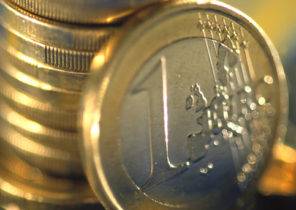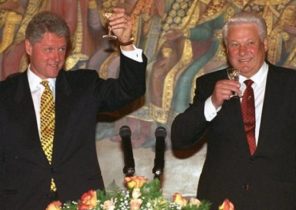
In 1905 shook the Moscow terrorist attack: when Duke Sergei Alexandrovich was getting out of his carriage, he was killed by a nitroglycerin bomb. They say that even glass in the Windows of the neighboring houses cracked. His wife, Grand Duchess Elizabeth Feodorovna, also heard the explosion from the Palace, she threw a charity work to help the Russian soldiers, which she organized, and ran to the cart.
Dissatisfaction with the Bolshevik government and the king has been brewing for a few years, and the active position of Grand Duke Sergei against the revolutionaries made him unpopular even among the intelligentsia. The attack was not a surprise. On the contrary, the Grand Duke deliberately drove one. Shortly before this he refused the post of the Governor of Moscow. It was a time colored by terror, violence, and lack of balance, just like we have now.
There, in the snow in the Kremlin lies badly wounded coachman near two dead horses. Soldiers covers what is left from the body of the Grand Duke. Elizabeth itself collects the bloodied body of her husband, hastily drove up a few minutes later. Like Isida. It compresses the medals Sergei in his hand. But that can be corrected after such a catastrophe? Witnesses say that she was not crying.
Elizabeth of Hesse-Darmstadt, born a German Princess and granddaughter of Queen Victoria of great Britain, later to be canonized by the Russian Orthodox Church. Her life to the brim was filled with drama, more on that later.
The next day Elizabeth, still reeling from the shock, agreed to attend a chamber of a terrorist. One of her close friends, reports the conversation.
“Who are you?”
“I’m his widow. Why did you kill him?”
“I didn’t want to kill you. Several times I have caught him with a bomb in his pocket, but, there you were. I waited until he was single”.
“And you didn’t think that killed me with him?”
I thought of Elizabeth after the terrorist attack in London. And we also die when they kill our fellowmen. We must strive to maintain, which way is forward? Elizaveta Fyodorovna knew that it was not passivity. She deliberately took Russia in his heart, and was hardly indifferent to politics. Soon after the attack in the Kremlin, she announced that she forgave the murderer of her husband, started a campaign to abolish the death penalty, and spoke to his brother-in-law — to Tsar Nicholas II, but in vain. Where did she get this determination?
When Elizabeth was in prison, she gave Kulaevu, the perpetrator of the attack, the gospel, and several times urged to read it and repent. She came out with a sad sigh: “I failed”.
But a hundred years later Elizabeth’s example sheds light on the situation in Europe, where almost every week there are attacks. Her behavior seems superhuman. Indeed, her light was brighter than the darkness of violence.
How did the lives of Elizabeth? She sold his property and founded in Moscow monastery, where she became abbess. The monastery was a hospital, orphanage, library and pharmacy, and is still very popular among the people of the chapel, open to all. Tell that Elizabeth at night, walked through the poorest areas of Moscow, providing assistance to the needy. During the riots that followed the revolution of 1917, Elizabeth was arrested on the orders of Lenin, and she was threatened with a terrible death. But she refused all offers to go to a safe place. She wanted to share the fate of Russia.
High copper cross, which was erected on the site of the death of her husband, Elizabeth was ordered to engrave: “father, forgive them, for they know not what they do”. Witnesses say she died with a prayer on his lips, on 18 July 1918 in an abandoned mine near Alapayevsk.
In the era of explosions, Elizabeth set an example of courage and love. She lost everything, but continued on his way. Not forgiveness if made it so free? Her choice gave vent to a long deep desire to help the poor and needy, and this example encourages us to do everything possible, despite the fact that life is now clouded with terror.







